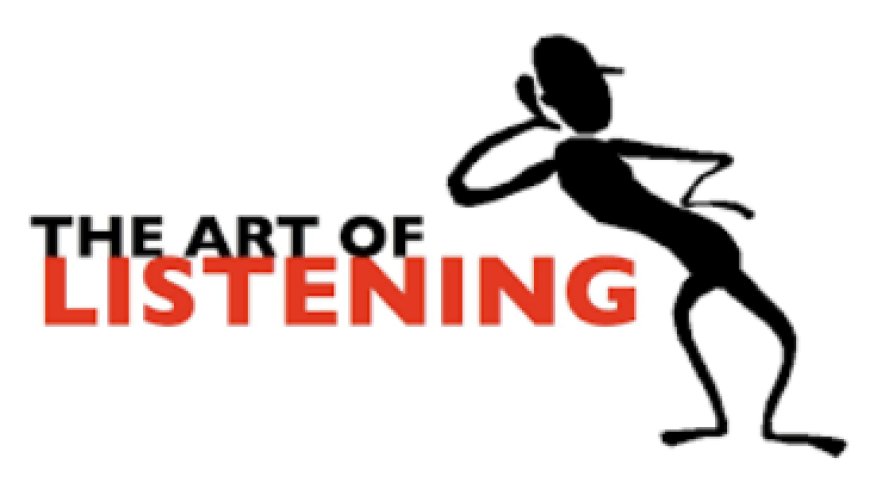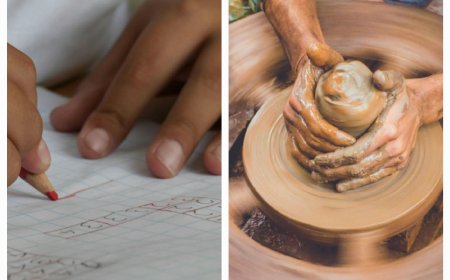The Art of Listening; How to Be a Better Conversationalist
The Art of Listening: Master active listening and enhance your conversational skills

Have you ever been in that awkward situation where you can hear what someone is saying yet you have no idea what they are talking about?
Or does it frustrate you when you’re talking about something important and the other person is obviously not listening to you.
Image Source: Solstice Physical Therapy
Well that’s because there’s a difference between listening and hearing and a difference between active and passive listening. Bihari 2013 defines listening as “the process of receiving, constructing meaning from, and responding to spoken and/ or non-verbal messages”
One’s ability to listen; not only listen, ACTIVELY listen can be useful in crucial moments in our relationships with co workers, friends, family and spouses.
Hearing can be effortless; we sometimes hear things we don’t want to, listening on the other hand requires effort; it requires one to hear, understand, be patient and show the other party that one is indeed listening. In fact, effective listening does not only require the use of our ears but also other parts of our body to try to understand the other person and most importantly, contributing to the conversation.
Humans are social beings and we have a need to communicate with each other across various spheres and levels of our life. Being able to initiate and carry on conversations but most importantly, being able to listen during conversations comes easily to some people than others but it this does not change the fact that it is a important skill for personal, academic and work lives. Most times, a lot of people confuse listening with hearing. However, hearing is simply a physiological process that involves receiving auditory stimuli through the ears and processing them in the brain while listening is both a physiological as well as a psychological process; it involves hearing, interpreting people’s words, tone of voice as well as non verbal cues and responding properly at appropriate times.
Human beings are generally more receptive and attracted towards people who they can “flow” with: people who can listen to them and carry conversations. The art of listening allows us to be observant, it allows us to be better learners, better friends, partners, leaders and so much more.
How can you be a better listener and a better conversationalist? Well, here are some tips on how to be an active listener and hold better conversations:
1. Listen ACTIVELY: It is very easy to delude ourselves into thinking we can multitask and do other things while we listen to people as they speak. However, the idea of multitasking is a delusion which usually results in us not paying adequate attention to the things we do. Listening while doing other things usually results in hearing the words being said but not being able to derive meaning from them and this can often be noticed by the speaker. Listening actively means that you’re not only listening to what other people have to say, but that you’re curious about what they have to say, ask questions and say something in response to what they’ve said.
2. Listen PATIENTLY: In personal relationships, there are times when all the other person needs is a listening ear. Beyond personal relationships, it is important to be patient enough to allow other people to make their point. Doing this allows you to be able to see other people’s point of view, be observant and learn from them. It is at this stage of listening that one should remember that speech is silver but silence is golden.
3. Show That They Have your Attention: Using verbal and non verbal cues such as a reassuring pat on the shoulder, nodding, asking questions and making comments once in a while will show the other party that you’ve been listening and that they have your full attention.
Image Source: esupermk (Active Listening)
People sometimes test us to see whether we’ve been listening to them especially in personal relationships where the other person is being vulnerable and saying something personal; finding out that you’ve cnot been listening can lead to problems in that kind of situation. Asking open ended questions will also reassure them that they have your attention, encourage people to say more and show that you’re willing to hear them out.
4. Respond: As much as listening sounds like you should just be receiving information, being a good listener requires you to process the information you’ve received and say something in response. Conversations are meant to at least be two-dimensional; between at least two people. If someone has said something, they’d expect you to at least respond in some meaningful way. Remember, you’re trying to have a conversation, not make the other person say a monologue.
So you see, developing listening skills for conversation is an art that takes time and precision and the fist step to learning any skill is to start, continue and continue.
What's Your Reaction?




































































































